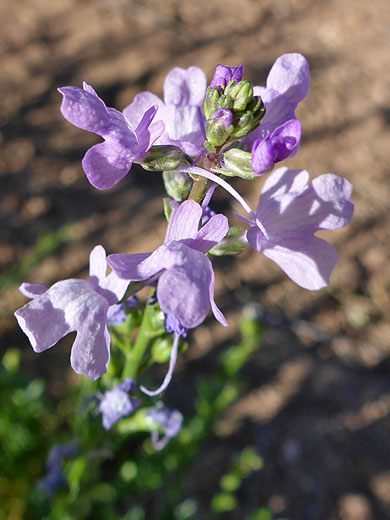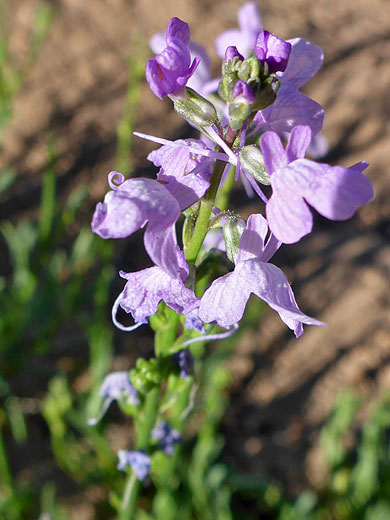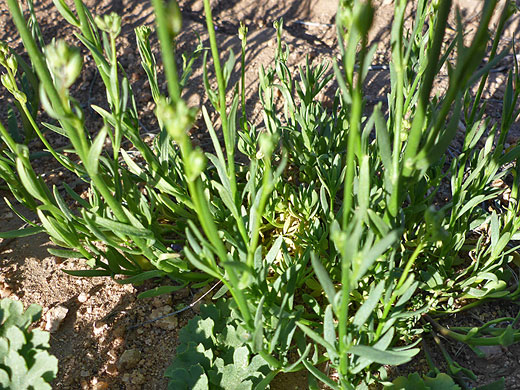Common name:
Texas toadflax
Family:
Scientific name:
Nuttallanthus texanus
Main flower color:
Range:
The Pacific states, the southern states and parts of the Rocky Mountains
Height:
Up to 2 feet
Habitat:
Dry plains, hillsides and canyons; up to 5,000 feet
Leaves:
Narrow, linear, up to one inch long
Season:
February to May
Nuttallanthus texanus, the only US species of this small genus, is found all across the US from Washington to Florida, and in the West is most common in coastal and desert regions. Stems and leaves are usually hairless. The green stems are slender, branched from the base, and are positioned at various angles, including short, basal, non-flowering stems that grow sideways, along the ground. Leaves are small, linear, closely spaced and alternately arranged.
The inflorescence is a narrow, dense, elongated cluster, lightly glandular-hairy. Flowers have a small, five-lobed calyx and a two lipped, light purple corolla; the upper lip is divided into two lobes, and is angled upwards, while the much larger lower lip has three lobes, and curves downwards. The throat of the corolla is swollen, largely obscuring the four stamens (two unequal length pairs) and the unlobed stigma. A narrow spur extends backwards from the base of the corolla; including this, the length of the corolla is about one inch.
The inflorescence is a narrow, dense, elongated cluster, lightly glandular-hairy. Flowers have a small, five-lobed calyx and a two lipped, light purple corolla; the upper lip is divided into two lobes, and is angled upwards, while the much larger lower lip has three lobes, and curves downwards. The throat of the corolla is swollen, largely obscuring the four stamens (two unequal length pairs) and the unlobed stigma. A narrow spur extends backwards from the base of the corolla; including this, the length of the corolla is about one inch.
All Contents © Copyright The American Southwest | Comments and Questions | Contribute | Site Map





